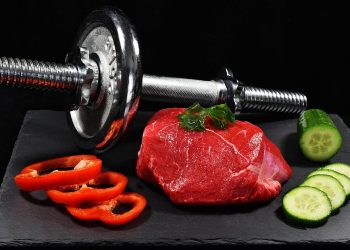Understanding Belly Fat: More Than Just Aesthetics
Belly fat, particularly visceral fat (the fat stored deep within the abdominal cavity surrounding organs), is associated with significant health risks. Beyond appearance, excess belly fat can contribute to insulin resistance, type 2 diabetes, heart disease, and certain cancers. Understanding the ‘why’ behind belly fat is the first step in effectively addressing it.
Types of Belly Fat
- Subcutaneous Fat: This is the fat you can pinch. While not ideal, it’s generally considered less harmful than visceral fat.
- Visceral Fat: This is the dangerous stuff. It’s metabolically active, meaning it releases hormones and inflammatory substances that disrupt normal body function.
Factors Contributing to Belly Fat Accumulation
- Diet: High intake of processed foods, sugary drinks, and unhealthy fats.
- Lack of Exercise: Sedentary lifestyles contribute to fat storage, especially in the abdominal area.
- Stress: Chronic stress elevates cortisol levels, which can promote fat storage in the abdomen.
- Genetics: Predisposition to store fat in certain areas can be inherited.
- Hormonal Changes: Menopause in women leads to decreased estrogen, which can cause fat redistribution to the abdomen.
- Lack of Sleep: Sleep deprivation can disrupt hormones that regulate appetite and metabolism, leading to increased belly fat.
Simple Tips That Work: Your Actionable Guide to Reducing Belly Fat
The good news is that belly fat is often the first type of fat your body sheds when you make positive lifestyle changes. These simple, actionable tips can help you get started on your journey to a healthier, flatter stomach.
1. Revamp Your Diet: Focus on Whole Foods
Diet plays a crucial role in losing belly fat. Avoid processed foods, sugary drinks, and excessive amounts of unhealthy fats. Instead, prioritize whole, unprocessed foods like:
- Fruits and Vegetables: Rich in fiber, vitamins, and minerals, and low in calories. Aim for a colorful variety. Examples: Berries, leafy greens, broccoli, bell peppers.
- Lean Protein: Helps you feel full and satisfied, and supports muscle mass. Examples: Chicken breast, fish, beans, lentils, tofu.
- Whole Grains: Choose whole grains over refined grains for sustained energy and fiber. Examples: Brown rice, quinoa, oats, whole-wheat bread.
- Healthy Fats: Incorporate healthy fats in moderation, as they are essential for hormone production and overall health. Examples: Avocados, nuts, seeds, olive oil.
Example: Replace your sugary morning cereal with a bowl of oatmeal topped with berries and nuts. Swap your afternoon soda for water with a squeeze of lemon.
2. Embrace Strength Training: Build Muscle, Burn Fat
While cardio is important, strength training is essential for building muscle mass. Muscle tissue burns more calories than fat tissue, even when you’re at rest. This means that the more muscle you have, the higher your metabolism will be, making it easier to lose belly fat and keep it off.
- Compound Exercises: Focus on exercises that work multiple muscle groups at once. Examples: Squats, deadlifts, lunges, push-ups, rows.
- Progressive Overload: Gradually increase the weight, reps, or sets you lift over time to challenge your muscles and promote growth.
- Frequency: Aim for at least two to three strength training sessions per week.
Example: Start with bodyweight exercises if you’re new to strength training. Gradually add weights as you get stronger. Consider working with a personal trainer to learn proper form and technique.
3. Prioritize Cardio: Boost Calorie Burn and Improve Heart Health
Cardiovascular exercise, also known as aerobic exercise, is any activity that gets your heart rate up. It’s a great way to burn calories, improve your cardiovascular health, and reduce belly fat.
- High-Intensity Interval Training (HIIT): Involves short bursts of intense exercise followed by brief recovery periods. HIIT is particularly effective for burning fat and improving fitness levels.
- Moderate-Intensity Cardio: Activities like brisk walking, jogging, swimming, or cycling. Aim for at least 150 minutes of moderate-intensity cardio per week.
Example: Incorporate HIIT workouts into your routine two to three times per week. Go for a brisk walk during your lunch break or after dinner.
4. Manage Stress Levels: Lower Cortisol, Reduce Fat Storage
Chronic stress elevates cortisol levels, which can lead to increased appetite and fat storage, particularly in the abdominal area. Finding healthy ways to manage stress is crucial for losing belly fat.
- Mindfulness Meditation: Practicing mindfulness meditation can help you become more aware of your thoughts and feelings, and reduce stress and anxiety.
- Yoga: Combines physical postures, breathing techniques, and meditation to promote relaxation and reduce stress.
- Spending Time in Nature: Studies have shown that spending time in nature can lower cortisol levels and improve mood.
- Adequate Sleep: Aim for 7-8 hours of quality sleep per night to regulate hormones and reduce stress.
Example: Dedicate 10-15 minutes each day to meditation or yoga. Go for a walk in a park or forest. Create a relaxing bedtime routine to improve sleep quality.
5. Get Enough Sleep: Regulate Hormones, Control Appetite
Sleep deprivation can disrupt the hormones that regulate appetite and metabolism, leading to increased cravings for sugary and fatty foods, and increased belly fat storage. Aim for 7-8 hours of quality sleep per night.
- Establish a Regular Sleep Schedule: Go to bed and wake up at the same time each day, even on weekends.
- Create a Relaxing Bedtime Routine: Avoid screen time before bed. Take a warm bath, read a book, or listen to calming music.
- Optimize Your Sleep Environment: Make sure your bedroom is dark, quiet, and cool.
Example: Avoid caffeine and alcohol before bed. Create a relaxing bedtime routine that includes a warm bath and reading a book. Use blackout curtains to block out light.
6. Limit Alcohol Consumption: Empty Calories and Hormonal Imbalance
Alcohol is high in calories and can contribute to weight gain, especially in the abdominal area. It can also disrupt hormones and impair your body’s ability to burn fat.
- Moderation is Key: If you choose to drink alcohol, do so in moderation. This means up to one drink per day for women and up to two drinks per day for men.
- Choose Wisely: Opt for lower-calorie alcoholic beverages like wine or light beer. Avoid sugary cocktails.
- Stay Hydrated: Drink plenty of water to help your body process alcohol.
Example: Instead of drinking a sugary cocktail, choose a glass of wine or a light beer. Drink water between alcoholic beverages.
7. Stay Hydrated: Boost Metabolism and Curb Cravings
Drinking plenty of water is essential for overall health and can also help you lose belly fat. Water can help boost your metabolism, curb cravings, and make you feel full, leading to reduced calorie intake.
- Aim for 8 Glasses a Day: A good general guideline is to drink at least eight glasses of water per day.
- Carry a Water Bottle: Keep a water bottle with you throughout the day to remind you to drink.
- Drink Water Before Meals: This can help you feel full and eat less.
Example: Keep a water bottle on your desk at work and sip on it throughout the day. Drink a glass of water before each meal.
8. Track Your Progress: Stay Motivated and Accountable
Tracking your progress can help you stay motivated and accountable. It allows you to see how far you’ve come and identify areas where you need to make adjustments.
- Keep a Food Journal: Record everything you eat and drink to track your calorie intake and identify unhealthy habits.
- Take Measurements: Measure your waist circumference and weight regularly to monitor your progress.
- Take Progress Photos: Take photos of yourself every few weeks to visually track your progress.
Example: Use a food tracking app to record your meals and snacks. Measure your waist circumference once a week. Take progress photos every month.
Conclusion: A Holistic Approach to a Healthier You
Losing belly fat is not just about aesthetics; it’s about improving your overall health and well-being. By adopting a holistic approach that includes a healthy diet, regular exercise, stress management, and adequate sleep, you can effectively reduce belly fat and improve your quality of life. Remember that consistency is key, and even small changes can make a big difference over time. Be patient with yourself, celebrate your successes, and don’t give up on your journey to a healthier, happier you.
Frequently Asked Questions (FAQs)
Here are some frequently asked questions about losing belly fat:
- Q: How long does it take to lose belly fat?
- A: The time it takes to lose belly fat varies depending on individual factors such as genetics, metabolism, and lifestyle. However, with consistent effort, you can expect to see noticeable results in a few weeks or months.
- Q: Can I target belly fat specifically?
- A: While you can’t spot-reduce fat, by following a healthy diet and exercise plan, you can reduce overall body fat, which will lead to a reduction in belly fat.
- Q: Are there any specific foods that burn belly fat?
- A: There are no magic foods that burn belly fat. However, incorporating foods rich in fiber, protein, and healthy fats into your diet can help you feel full, control cravings, and promote fat loss.
- Q: Is it safe to lose belly fat quickly?
- A: Rapid weight loss is generally not recommended as it can lead to muscle loss and other health problems. Aim for a gradual and sustainable weight loss of 1-2 pounds per week.
- Q: What if I’m not seeing results despite my efforts?
- A: If you’re not seeing results, consider consulting with a healthcare professional or registered dietitian to assess your diet and exercise plan and identify any underlying medical conditions that may be affecting your progress.
- Q: Are supplements helpful for losing belly fat?
- A: Some supplements may claim to help with weight loss, but their effectiveness and safety are often questionable. It’s best to focus on a healthy diet and exercise plan rather than relying on supplements.
- Q: What is the role of genetics in belly fat?
- A: Genetics can influence where your body tends to store fat. While you can’t change your genes, you can still influence your body composition through diet and exercise. Some people are genetically predisposed to store more fat in their abdominal area.
- Q: How does menopause affect belly fat in women?
- A: During menopause, estrogen levels decline, which can lead to a redistribution of fat to the abdominal area. Maintaining a healthy lifestyle through diet and exercise can help manage this change.
- Q: Is walking enough exercise to lose belly fat?
- A: Walking is a great way to start, but combining it with strength training and potentially some higher intensity cardio will yield better results for belly fat loss.
- Q: Can stress alone cause belly fat?
- A: While stress doesn’t directly *cause* belly fat, chronic stress elevates cortisol levels, which can increase appetite and promote the storage of fat in the abdominal area. Managing stress is crucial for overall health and can indirectly help with belly fat loss.












